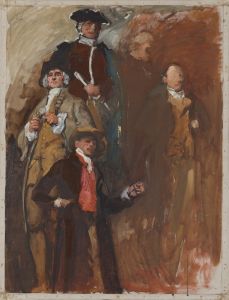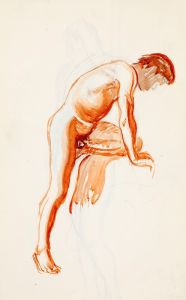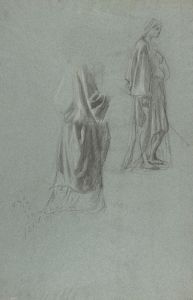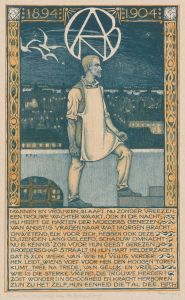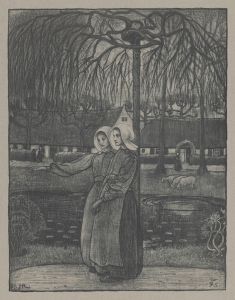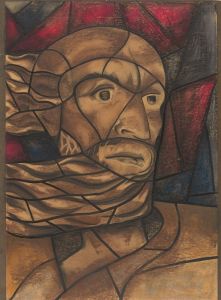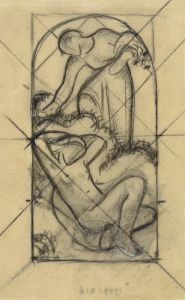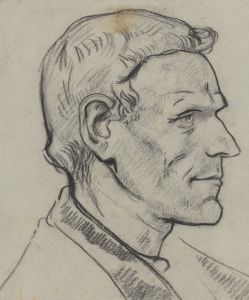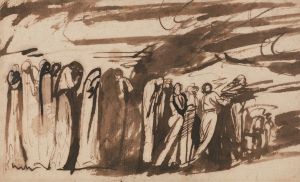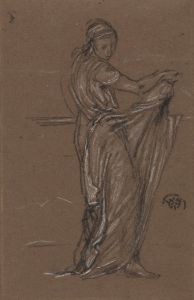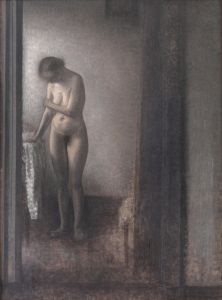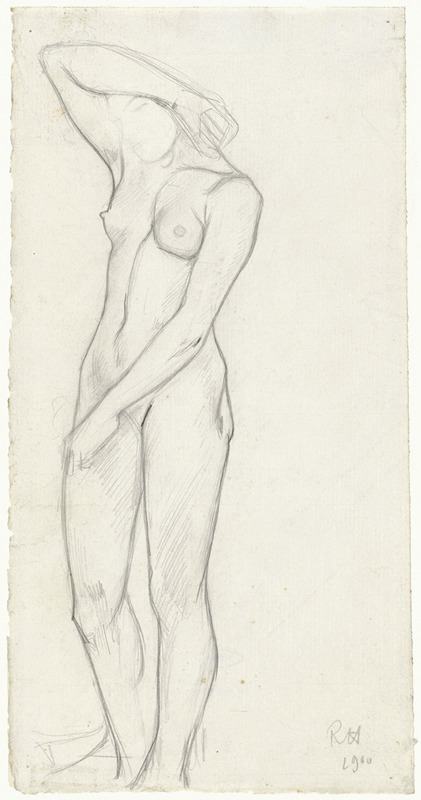
Staande naakte vrouw
A hand-painted replica of Richard Nicolaüs Roland Holst’s masterpiece Staande naakte vrouw, meticulously crafted by professional artists to capture the true essence of the original. Each piece is created with museum-quality canvas and rare mineral pigments, carefully painted by experienced artists with delicate brushstrokes and rich, layered colors to perfectly recreate the texture of the original artwork. Unlike machine-printed reproductions, this hand-painted version brings the painting to life, infused with the artist’s emotions and skill in every stroke. Whether for personal collection or home decoration, it instantly elevates the artistic atmosphere of any space.
Richard Nicolaüs Roland Holst was a Dutch artist known for his contributions to the Symbolist movement in the late 19th and early 20th centuries. His work often explored themes of spirituality, mysticism, and the human form, reflecting the broader Symbolist interest in conveying ideas and emotions through symbolic imagery. One of his notable works is "Staande naakte vrouw," which translates to "Standing Nude Woman."
"Staande naakte vrouw" is a painting that exemplifies Roland Holst's skill in capturing the human form with sensitivity and a sense of introspection. The painting depicts a nude woman standing, rendered with a focus on form and posture rather than explicit detail. This approach aligns with the Symbolist movement's tendency to prioritize mood and meaning over realistic representation.
Roland Holst's work, including "Staande naakte vrouw," often reflects his interest in the interplay between the physical and the spiritual. The nude figure in this painting can be seen as a representation of purity and vulnerability, common themes in Symbolist art. By presenting the figure in a standing position, Roland Holst may be emphasizing strength and presence, inviting viewers to consider the deeper emotional or spiritual state of the subject.
The use of color and light in "Staande naakte vrouw" is subtle, contributing to the overall atmosphere of the painting. Roland Holst's palette often included muted tones, which helped to create a contemplative mood. The lighting in the painting may be used to highlight certain aspects of the figure, drawing attention to the contours and the natural beauty of the human form.
Richard Nicolaüs Roland Holst was not only a painter but also a printmaker and designer, which influenced his approach to composition and form. His works often exhibit a strong sense of design, with careful attention to balance and harmony. This is evident in "Staande naakte vrouw," where the composition is both simple and effective, focusing the viewer's attention on the subject without distraction.
Throughout his career, Roland Holst was associated with various artistic movements and groups, including the Amsterdamse Joffers, a group of female artists in Amsterdam, and the broader Dutch Symbolist movement. His work was part of a larger cultural context that sought to explore the unseen and the emotional through art.
"Staande naakte vrouw" is a testament to Roland Holst's ability to convey complex ideas through simple yet powerful imagery. The painting remains an example of his contribution to the Symbolist movement and his exploration of the human condition. While specific details about the painting's creation and history may not be extensively documented, its significance lies in its representation of the themes and styles that defined Roland Holst's artistic vision.
In summary, "Staande naakte vrouw" by Richard Nicolaüs Roland Holst is a work that captures the essence of Symbolist art through its depiction of the human form. The painting reflects Roland Holst's interest in spirituality and the emotional depth of his subjects, making it a notable piece within his body of work.





